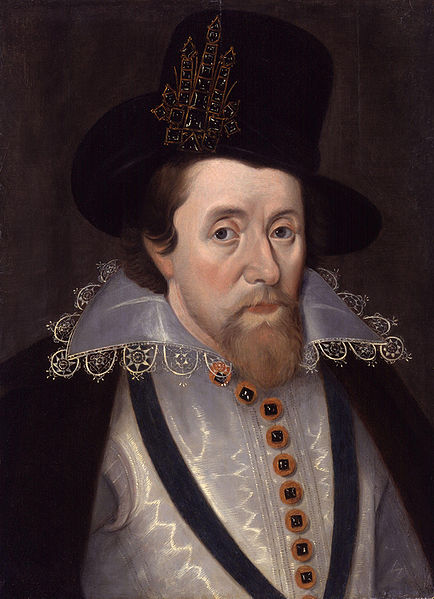
James VI of Scotland and I of England was born in 1566. He was the son of Mary, Queen of Scots, and her second husband, Lord Darnley.
His early life was eclipsed by the tense political state in Scotland at the time, which was partly caused by religious disquiet. His mother was a Catholic, who through her own mother was closely related to the Guise family, the leaders of the Catholic bloc in France. James himself was christened a Catholic but was raised a Protestant.
After James' mother was dethroned in 1567, James was declared King. Scotland was at this time ruled by a series of regents but seriously fractured by struggles for power by warring factions. The young James was educated by one of the leading academics of his day, James Buchanan. From 1583 onwards James asserted his own power over the government in Scotland. Following his mother's execution by the English in 1587, he became the clear successor to Elizabeth I.
Although the Queen was exceedingly hesitant to confirm his position as the heir apparent, or even to mention the subject of her successor, Government officials and nobles of power soon became extremely interested in his religious stance. James strongly opposed the strict form of Presbyterianism, which had firmly established itself in Scotland, and resisted the temptation towards discrimination against Catholics.
Upon Queen Elizabeth's death in 1603, he was officially invited to take the throne of England by the English Privy Council. However James soon met with political difficulties in England, where legal professionals and politicians were suspicious about his unfaltering will to unite England, Wales and Scotland into a single, United Kingdom and he quickly realized that it would be impossible to get Parliament to agree to his plans.
Later in the reign, he found it all the time more difficult to finance his extravagant spending and struggled with disagreements over religious and foreign policy. James died in 1625.
Learning Centre
The Evolution of Fireworks
Bastille Day
Chinese New Year
Diwali
History of Gun Powder
Gunpowder Plot
James VI
Plotters and Conspirators
The Lords
Firework Glossary
Traditional Recipes
FAQs
Poems
Quiz
